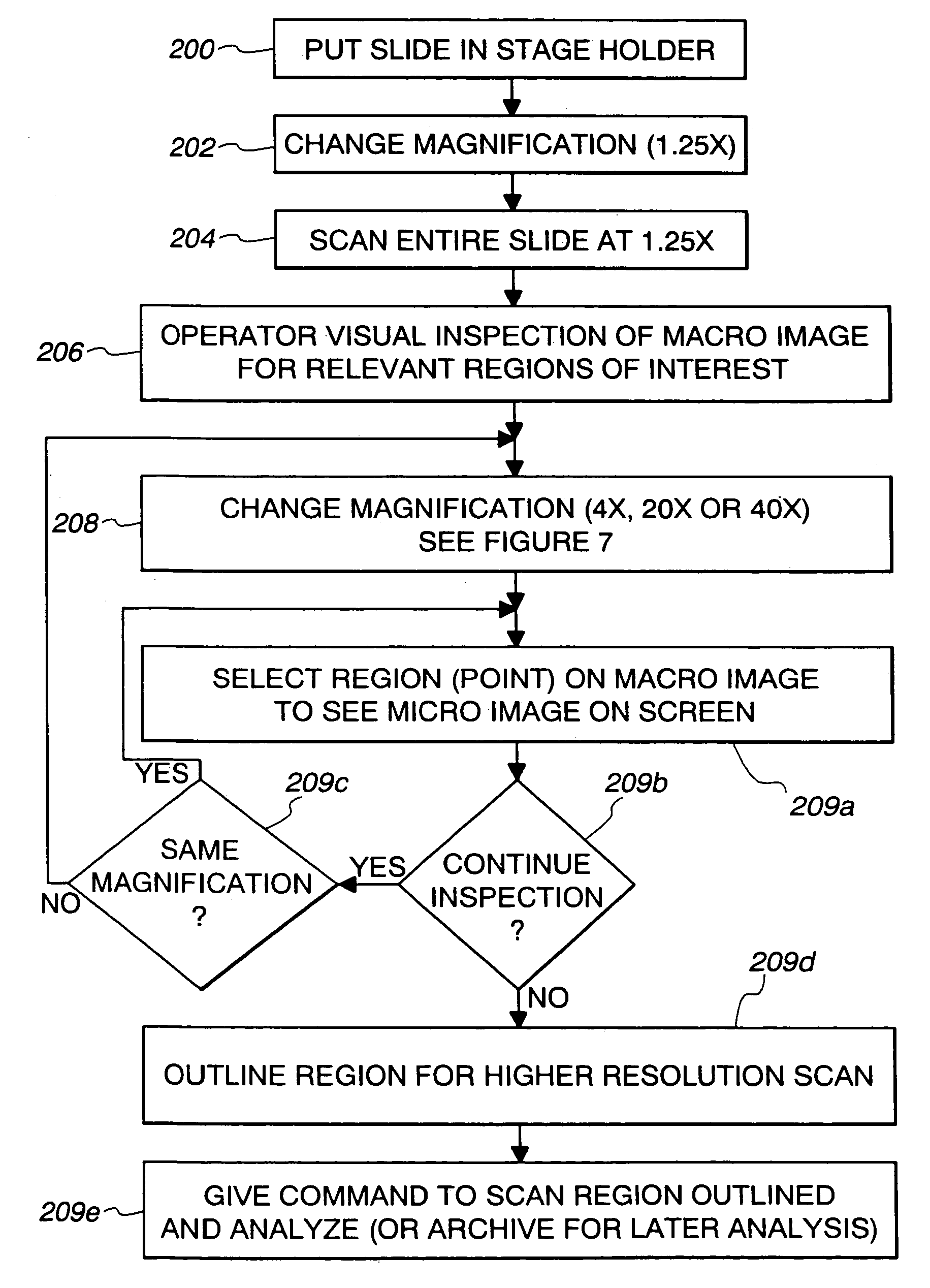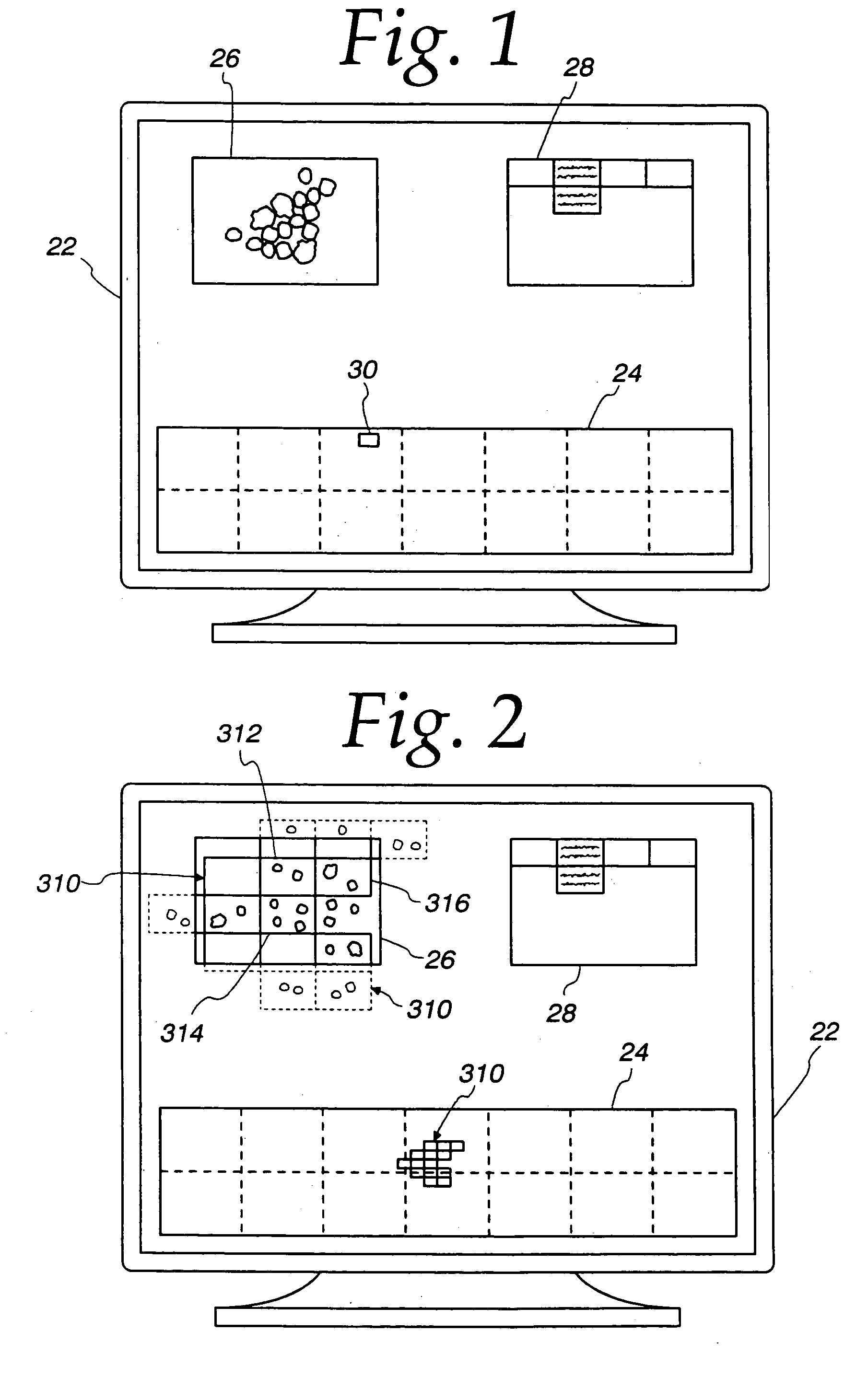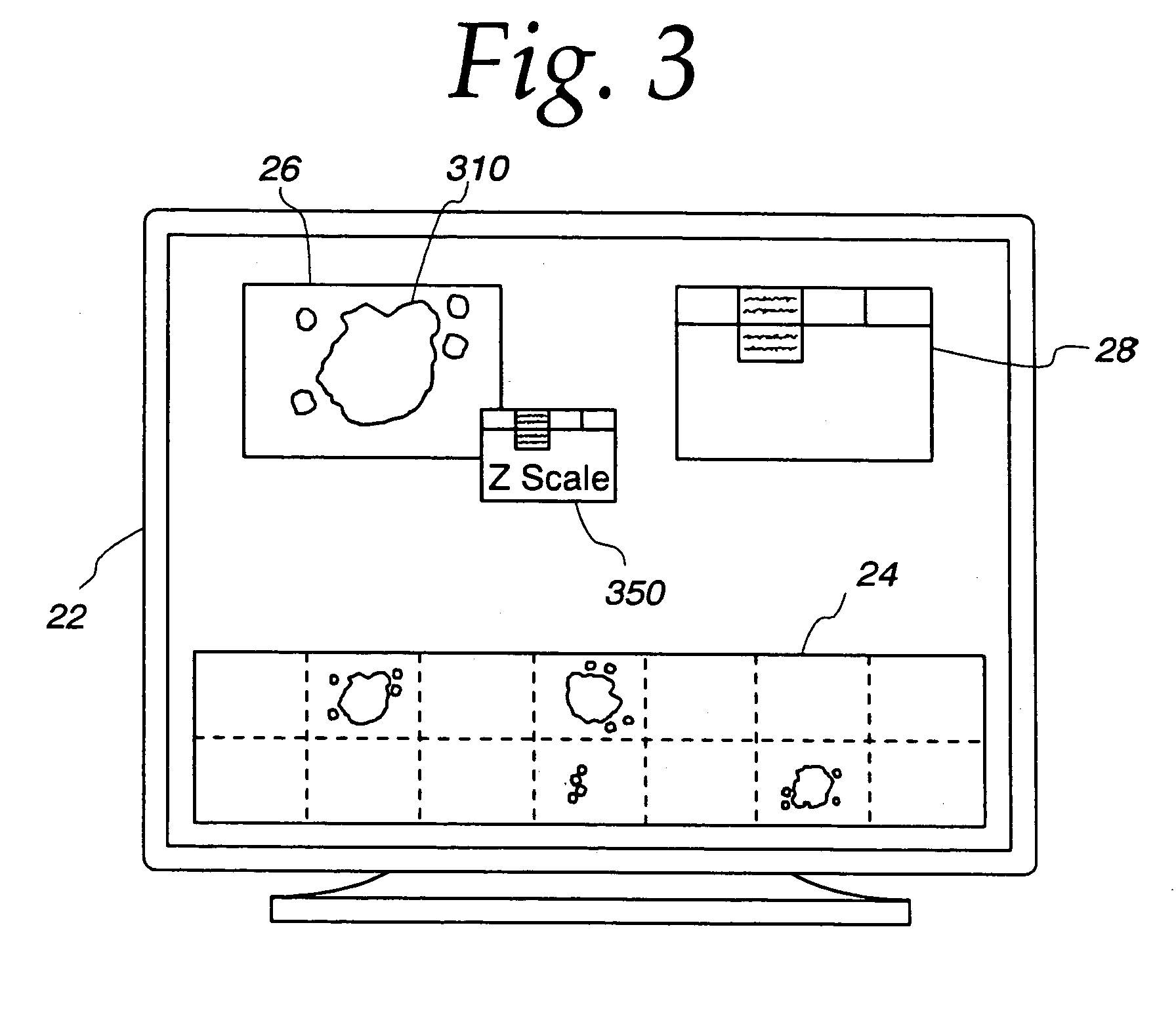Apparatus for remote control of a microscope
a microscope and remote control technology, applied in the field of microscope remote control apparatus, can solve the problems of not being completely automated, unable to ensure and unable to achieve the effect of ensuring that one could go back
- Summary
- Abstract
- Description
- Claims
- Application Information
AI Technical Summary
Benefits of technology
Problems solved by technology
Method used
Image
Examples
Embodiment Construction
[0044]Referring now to the drawings, and especially to FIGS. 4 and 5, apparatus for synthesizing low magnification and high magnification microscopic images is shown therein and generally identified by reference numeral 10. The system includes a computer 12 which is a dual Pentium Pro personal computer in combination with a Hitachi HV-C20 video camera 14 associated with a Zeiss Axioplan 2 microscope 16. The computer system 12 is able to receive signals from the camera 14 which captures light from the microscope 16 having a microscope slide 18 positioned on an LUDL encoded motorized stage 20. The encoded motorized stage 20 includes a MAC 2000 stage controller for controlling the stage in response to the computer 12. A microscope slide 18 includes a biological specimen 21 which is to be viewed by the microscope and whose image is to be digitized both at low magnification and at high magnification as selected by a user. The low magnification digitized image is then displayed on a 21 in...
PUM
| Property | Measurement | Unit |
|---|---|---|
| imaging | aaaaa | aaaaa |
| microscope imaging | aaaaa | aaaaa |
| power | aaaaa | aaaaa |
Abstract
Description
Claims
Application Information
 Login to View More
Login to View More - R&D
- Intellectual Property
- Life Sciences
- Materials
- Tech Scout
- Unparalleled Data Quality
- Higher Quality Content
- 60% Fewer Hallucinations
Browse by: Latest US Patents, China's latest patents, Technical Efficacy Thesaurus, Application Domain, Technology Topic, Popular Technical Reports.
© 2025 PatSnap. All rights reserved.Legal|Privacy policy|Modern Slavery Act Transparency Statement|Sitemap|About US| Contact US: help@patsnap.com



